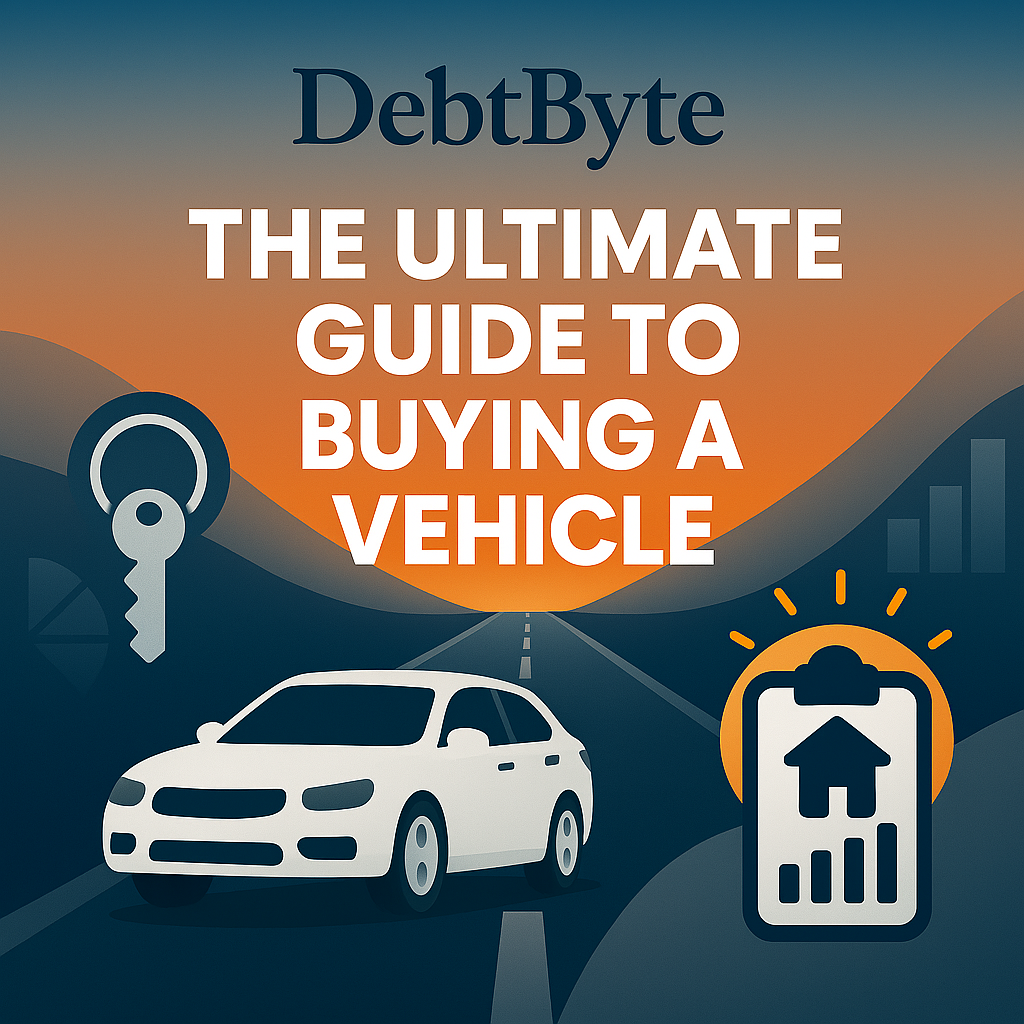Purchasing a vehicle is a major financial commitment and an exciting milestone. The process can be complex, with numerous decisions along the way. This guide will walk you through every major step—from defining your needs and setting a realistic budget to choosing between new, used, or certified pre-owned vehicles; securing financing; test driving; negotiating the price; and managing the final paperwork. By the time you finish reading, you’ll be armed with the knowledge to make an informed and confident car-buying decision.
1. Define Your Needs and Budget
Assess Your Lifestyle and Requirements
Before you dive into car listings, begin by answering some key questions about your lifestyle:
- Purpose: What will you primarily use the car for? Is it for daily commuting, family trips, long-distance travel, or perhaps a mix of these?
- Capacity: How many passengers do you regularly transport? Do you need extra cargo space or specialized features (like towing capacity)?
- Features: List the must-have features versus nice-to-have extras, such as safety technology, infotainment systems, or advanced driver-assistance systems.
Establish a Realistic Budget
Budgeting isn’t just about the sticker price; consider all the costs involved:
- Purchase Price: Set a maximum limit based on your savings and financing options.
- Additional Costs: Factor in taxes, registration fees, insurance, and potential maintenance expenses.
- Monthly Payments: If you’re financing, aim to spend no more than 15% of your monthly income on vehicle expenses. Use online auto loan calculators to estimate what your monthly payments might be, including taxes and fees.
Creating a detailed budget based on realistic assumptions helps you narrow down your choices without overspending.
2. New vs. Used vs. Certified Pre-Owned: Weighing Your Options
Buying New
Pros:
- Latest Technology & Safety Features: New cars come with advanced systems built-in.
- Full Warranty Coverage: Most new vehicles come with multi-year warranties and roadside assistance.
- Financing Benefits: Manufacturers often offer special financing rates or cashback deals.
Cons:
- Rapid Depreciation: New cars lose a significant percentage of their value in the first few years.
- Higher Purchase Price: The upfront cost is usually greater than that of used vehicles.
Buying Used
Pros:
- Cost Savings: The purchase price is lower, and depreciation has already taken its initial steep dive.
- Lower Insurance Costs: Often, used cars cost less to insure.
- Wider Selection Within Budget: You can often afford a higher-class model for the same price as a new base-level car.
Cons:
- Uncertain History: Without a certified record, there may be unknown wear and tear or past damages.
- Potential for Increased Maintenance: Used vehicles may have higher repair costs, especially if out of warranty.
Certified Pre-Owned (CPO)
CPO vehicles bridge the gap between new and used:
- Rigorous Inspections: These vehicles undergo strict inspections and come with some warranty coverage.
- Better Condition and Reliability: Although they cost a bit more than regular used cars, CPO vehicles are generally in excellent condition.
When choosing, consider your priorities: If you value cost savings and can do your homework on vehicle history, a used car might be ideal. However, if you want some peace of mind with warranty protection, a certified pre-owned option is worth the extra investment.
3. Research Makes, Models, and Cost of Ownership
Investigate Reliability and Resale Value
Not all vehicles are equal when it comes to reliability:
- Consumer Reports & J.D. Power: Use these resources to compare reliability ratings, owner satisfaction scores, and resale values.
- Long-Term Costs: Look at factors such as fuel efficiency, average repair costs, and expected depreciation. A car with a higher upfront cost but lower long-term maintenance might be more economical overall.
Compare Specific Models
- Test Online Reviews: Read feedback on forums and automotive review sites like Edmunds and Kelley Blue Book (KBB).
- Visit Dealerships: Although research can be done from home, seeing a vehicle in person and talking to knowledgeable staff can either validate or challenge your research insights.
A well-researched choice minimizes surprises post-purchase and ensures you’re investing in a vehicle that will serve you reliably for years.
4. Financing: Loans and Paying Cash
Financing With an Auto Loan
Pros:
- Ownership and Equity: With each payment, you build equity in your vehicle, which can help when it comes time to sell or trade in.
- Flexibility: Financing lets you choose a car that might cost more than what you currently have in cash.
Tips for Securing a Loan:
- Pre-Approval: Reach out to banks or credit unions to get pre-approved. This sets your budget and improves your negotiating power at the dealership.
- Interest Rates: Shop around for competitive interest rates and pay attention to the length of the loan. Shorter loan terms usually mean higher monthly payments but significantly less interest over time.
- Loan Terms: Aim for a term of 36 to 60 months. Avoid extended terms that may lower your monthly payment but increase the total interest paid.
Paying Cash
Pros:
- No Interest: When you pay cash, you avoid the interest costs associated with loans.
- Stronger Negotiation Position: Cash buyers are often seen as more attractive to sellers, possibly resulting in a better deal.
- Full Ownership Immediately: There’s no burden of monthly payments—ideal for those who have the available funds.
Considerations:
- Ensure that paying cash doesn’t deplete your emergency savings.
- If you choose to use cash, negotiate assertively knowing you have the flexibility to walk away from financing complications.
Deciding between these options depends on your personal financial situation. If you have ample savings, cash might be the best route; otherwise, a well-structured auto loan is a solid choice.
5. Taking the Next Step: Test Driving and Inspecting the Vehicle
The Test Drive Experience
Never rush into buying a car without taking it for a spin:
- Comfort and Fit: Adjust the seat, mirrors, and controls. The car should feel comfortable during extended drives.
- Performance: Evaluate acceleration, braking, steering response, and how the car handles on different road conditions.
- Technology and Ergonomics: Check the usability of the infotainment system, the clarity of gauges, and the overall ease of use for features like climate control.
- Noise Levels: A quiet cabin during a test drive signals good quality insulation.
Inspecting a Used Vehicle
For used vehicles, a thorough inspection is crucial:
- Vehicle History Report: Use services like CarFax or AutoCheck to examine past records, including accidents, previous ownership, and service history.
- Professional Inspection: Hire a trusted mechanic to perform an independent inspection, checking the engine, transmission, brakes, and suspension.
- Exterior and Interior: Look for signs of wear, corrosion, mismatched paint (which could suggest past accidents), and check the condition of tires and brakes.
Taking your time during the test drive and inspection can save you from future headaches and additional repair costs.
6. Negotiating the Price Like a Pro
Do Your Homework
- Market Research: Before entering negotiation, research the fair market value using tools like Kelley Blue Book or Edmunds. Understand what similar vehicles are selling for.
- Set Your Maximum Price: Know your absolute limit based on your budget and stick to it.
Effective Negotiation Strategies
- Begin Lower: Start with an initial offer below the fair market value to leave room for negotiation.
- Be Willing to Walk Away: If the negotiations aren’t meeting your expectations, be prepared to leave. Often, this can prompt a better deal.
- Negotiate Fees Separately: Focus first on the price of the car. Once that’s settled, discuss trade-ins, financing rates, and any additional fees.
- Get Multiple Quotes: Using competing offers can strengthen your position. Let the dealer know you’re comparing options.
A confident, well-researched negotiation not only saves money—it also instills a sense of empowerment over your financial decisions.
7. Warranties, Fees, and Final Paperwork
Understanding Warranty Coverage
- New Vehicles: Typically come with comprehensive warranties covering 3–5 years or 36,000–60,000 miles.
- Used Vehicles: May come with limited warranties, or you may have the option to purchase an extended warranty. Always confirm what is covered and for how long.
Hidden Fees to Look Out For
- Dealer Fees: These can include documentation fees, dealer prep fees, and more. Know what’s standard in your area.
- Additional Costs: Title, registration, and taxes can add up quickly. Review all documents carefully.
Finalizing the Deal
Before you sign on the dotted line:
- Review All Documents: Read your financing agreement, warranty details, and sales contract thoroughly. Ensure that all agreed-upon terms are clearly stated.
- Verify the VIN: Ensure that the vehicle’s VIN on paper matches the one on the car to avoid any potential fraud.
- Confirm Delivery Terms: Clarify details about delivery or pickup, as well as any return policies or guarantees that may be applicable.
8. Post-Purchase Checklist & Next Steps
Once the deal is done, there are a few important steps to ensure a smooth transition into car ownership:
- Registration & Insurance: Immediately register your vehicle with your local DMV and update or purchase insurance coverage.
- Set Up Maintenance: Follow the manufacturer’s recommended maintenance schedule. Keep records of all services.
- Keep Important Documents: Store the sales contract, warranty information, and any financing documents safely.
- Budget for Ongoing Costs: Set aside funds for regular maintenance, repairs, and eventual upgrades. Many experts recommend a dedicated maintenance fund.
Following these steps ensures that your investment is protected and that you maximize the life and reliability of your new vehicle.
Final Thoughts: Making a Smart Car Purchase
Buying a vehicle is a journey that combines personal needs with financial strategy. By thoroughly assessing your needs, rigorously researching your options, and confidently negotiating the best deal, you can secure a car that not only fits your lifestyle but also makes sound financial sense.
Remember, a well-informed decision can save you thousands of dollars over the life of your vehicle while providing reliable transportation tailored to your needs. Take your time, do your homework, and enjoy the ride.
Happy car shopping!
#CarBuyingTips #AutoFinance #FirstCar #SmartShopping #DebtByte
Feel free to leave a comment or reach out if you have any questions or need further advice on your car-buying journey. Enjoy the road ahead!


Leave a Reply